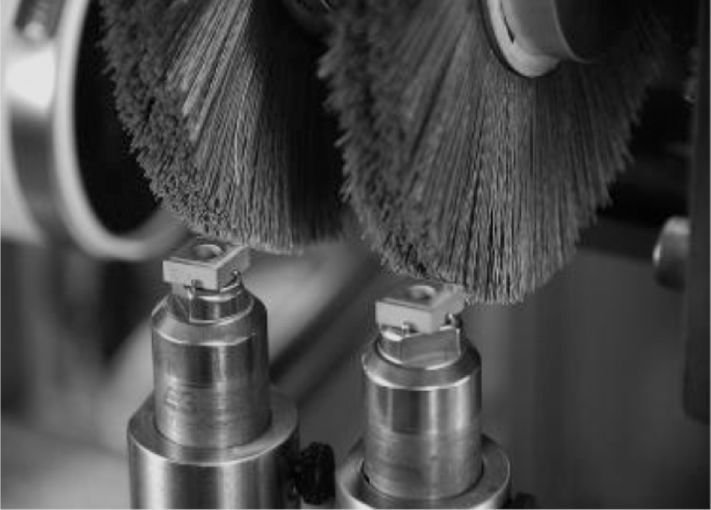Why are tools deliberately "dulled"?
Isn’t the faster the CNC tools used in machining centers, the better? Why do they need to be passivated? In fact, tool passivation is not what everyone understands literally, but a way to increase the service life of tools. Improve tool quality through processes such as smoothing, polishing, and deburring. This is actually a normal process after the tool is finely ground and before coating.
What is tool passivation?
By deburring, smoothing and polishing the cutting tools, the quality of the cutting tools and their service life can be extended. The name of the process after fine grinding of the tool and before coating is not uniform at home and abroad. It is called "edge passivation", "edge strengthening", "edge honing", "edge preparation" or "edge preparation". ER (Edge Radiusing) processing" etc.
Why should tool passivation be performed?
The cutting edge of a tool after being sharpened by an ordinary grinding wheel or a diamond grinding wheel has microscopic gaps (i.e. micro chipping and sawing edges) of varying degrees. During the cutting process, the micro-notch on the tool edge can easily expand, accelerating tool wear and damage.
Modern high-speed cutting processing and automated machine tools have put forward higher requirements for tool performance and stability. In particular, coated tools must pass the passivation treatment of the cutting edge before coating to ensure the firmness and service life of the coating.
The purpose of edge passivation technology is to solve the micro-notch defects of the sharpened tool edge, reduce or eliminate the sharpness, and achieve the purpose of being smooth, smooth, sharp, strong and durable.
The main effects of tool passivation
Edge rounding: remove edge burrs and achieve precise and consistent rounding.
Edge burrs cause tool wear and the surface of the workpiece will become rough. After passivation treatment, the edge becomes very smooth, which greatly reduces chipping and improves the surface finish of the workpiece.
Polishing treatment of grooves
Polish the tool grooves evenly to improve surface quality and cutting performance.
The flatter and smoother the groove surface, the better the chip evacuation, allowing for higher speed cutting. At the same time, the improved surface quality also reduces the risk of the tool and the processing material getting stuck. And it can reduce cutting force by 40%, making cutting smoother.
Polishing of the coating
Remove the protruding droplets produced after the tool coating, improve the surface finish and increase the adsorption of lubricating oil.
The coated tool surface will produce some tiny protruding droplets, which increases the surface roughness, making the tool prone to generate greater friction heat during the cutting process and reducing the cutting speed. After passivation polishing, the droplets are removed, leaving many small holes, which can absorb more cutting fluid during processing, greatly reducing the heat generated during cutting, and greatly increasing the speed of cutting.





